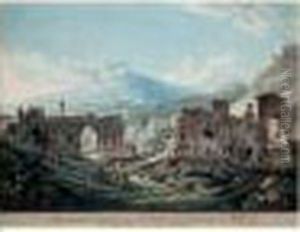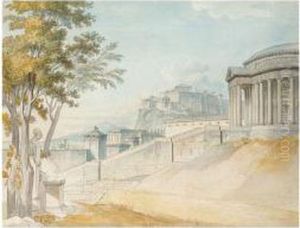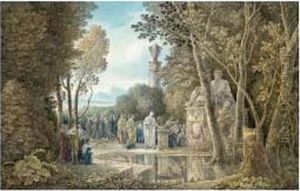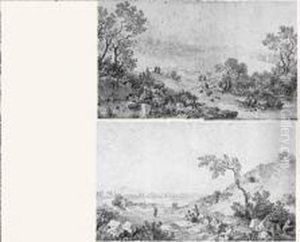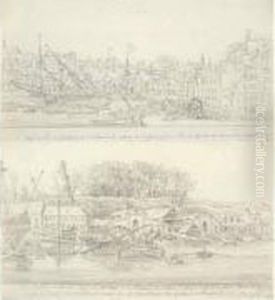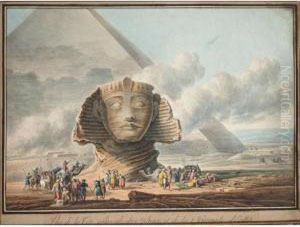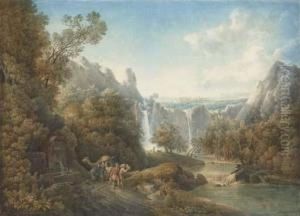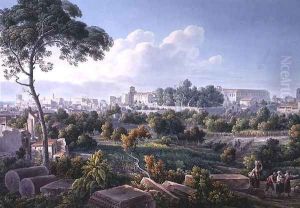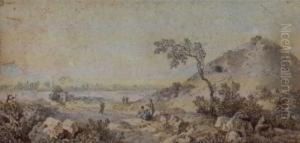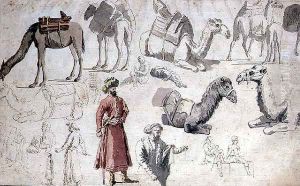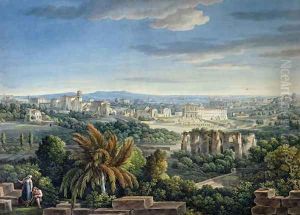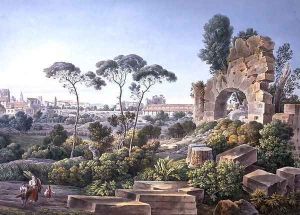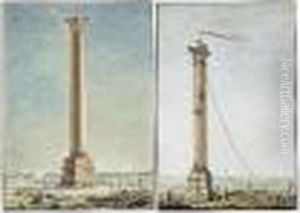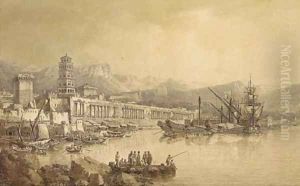Louis Francois Cassas Paintings
Louis Francois Cassas was a French painter, draughtsman, and engraver renowned for his detailed architectural and landscape sketches, which he produced during his extensive travels across Europe and the Near East. Born on June 3, 1756, in Azay-le-Ferron, Touraine, France, Cassas displayed an early talent for drawing and painting, which prompted him to pursue a career in the arts. He studied under the guidance of the architectural painter Jean-Charles Frontier and the history painter Gabriel-François Doyen.
Cassas's passion for travel and drawing historical monuments led him to embark on a journey throughout Europe, including visits to Italy, where he stayed for several years. His work in Italy mainly involved recording ancient monuments and landscapes, which earned him significant recognition. He was particularly fascinated by the ruins of antiquity and the vibrant life in the streets, which he meticulously captured in his sketches and watercolors.
In 1784, Louis XVI of France commissioned Cassas to travel to the Ottoman Empire to document its historical landmarks. Over the next several years, Cassas traveled extensively through the Balkans, Greece, Turkey, and the Levant, documenting the scenery, antiquities, and architecture. His drawings from this period are particularly valuable for their accuracy and detail, providing insight into the appearance of many structures that have since been lost or altered.
Upon his return to France, Cassas found success as an artist and was received into the French Academy. He published several collections of his works, including the well-known 'Voyage pittoresque de la Syrie, de la Phoenicie, de la Palestine, et de la basse Egypte' (Picturesque voyage to Syria, Phoenicia, Palestine, and Lower Egypt), which featured engravings based on his drawings and was well received for its comprehensive depiction of the regions he visited.
Cassas's work is significant for its contribution to the field of Orientalism and the burgeoning interest in the Middle East and its history during the late 18th and early 19th centuries. His detailed records of ancient sites and contemporary life in the Ottoman Empire helped shape European understanding and appreciation of these cultures.
Louis Francois Cassas passed away on November 1, 1827, in Versailles, France. His legacy lives on through his numerous drawings, prints, and written works, which continue to be studied and admired for their historical value and artistic merit.







